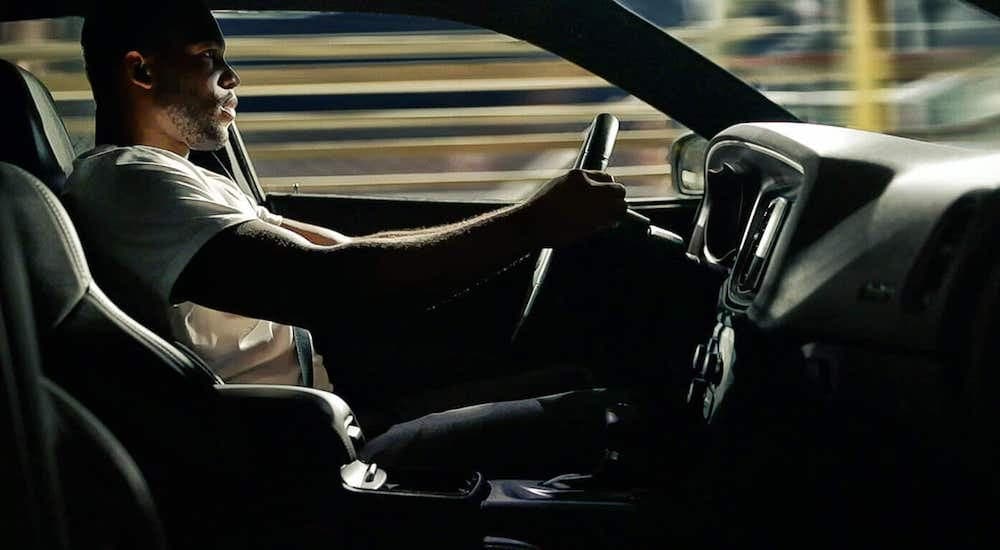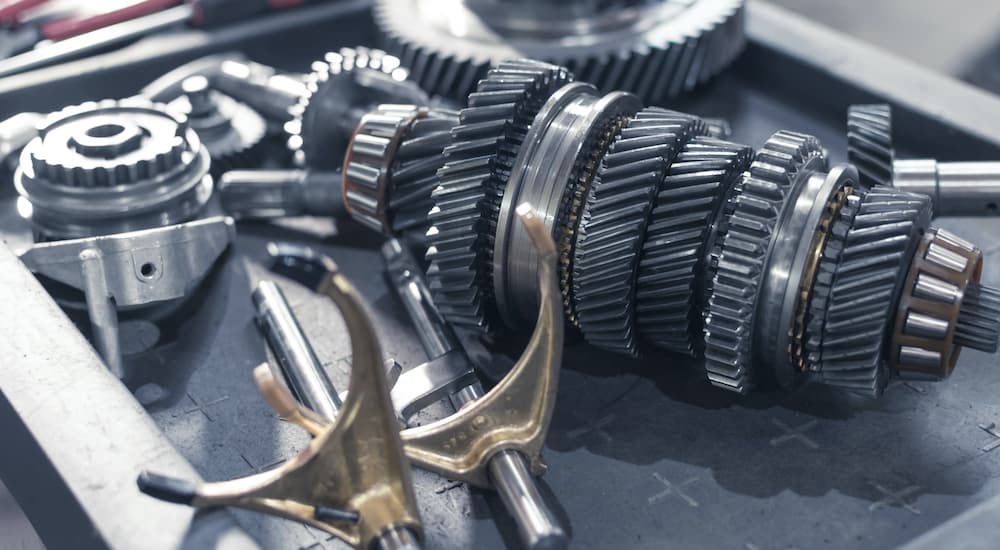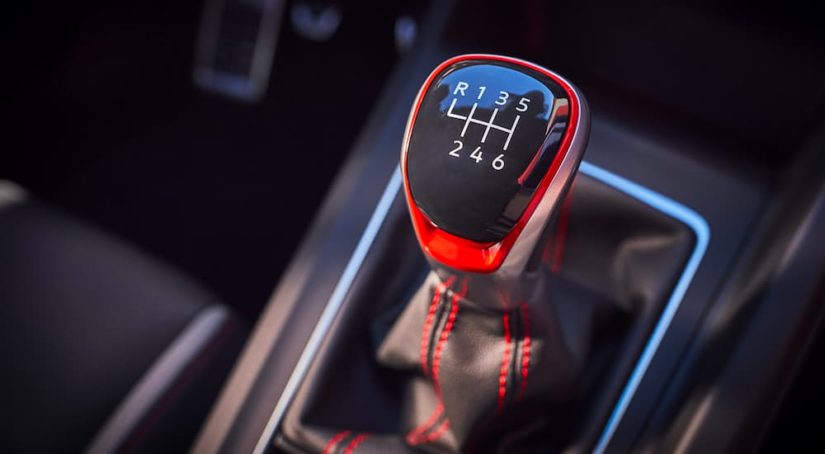Not too long ago, a manual transmission was known as a “standard,” and pretty much everyone grew up driving them. Today, automatic transmissions have become the standard, and many young (and even not-so-young) drivers have never even ridden in a manual car, let alone had the chance to drive one. So what are you to do if you grew up watching Fast and Furious or playing Forza and want to experience what it feels like to swiftly shift through the gears yourself as you floor it from a red light or heel and toe downshift as you enter a hairpin corner on a back road? While it may seem intimidating at first, the best way to learn how to drive a manual is to go out and buy one.
It doesn’t matter if you have never touched a stick shift before in your life – while it takes a bit of practice to drive a manual naturally, you’ll be able to pick up the basics quickly enough to be safe on the road. Despite the aura that driving a manual has picked up among driving enthusiasts, the skill is considered nothing special in older generations. Back then, if you wanted to drive, you had to learn how to drive a manual. If they could do it, so can you. So go out, find a manual car you like and get ready to learn.
Step 1 – Learn the Basics
Now, before you go out and buy a stick shift, there are a few things you should learn first. If you have a relative or friend who can walk you through the basics, that’s your best option. However, even if you don’t know anyone who can help, there are a ton of resources available online. A quick search of YouTube will turn up a ton of helpful videos explaining how to get started driving a manual, with all sorts of useful tips and tricks. If you have experience driving manual cars in the more realistic video games, you probably have a head start on understanding the basics, but a virtual car and a real car feel very different even if you have a full gaming setup with a wheel and pedals.
While an automatic handles pretty much everything for you, driving a manual takes a bit more understanding of how the car functions. You don’t need to be an engineer to drive stick, but knowing how the clutch operates and the effect gear ratios have will help you avoid some of the dumber newbie mistakes (but be assured – no matter how much you learn ahead of time, you will be making a ton of mistakes when you start driving for real).

Step 2 – Find a Car
There is no point in putting it off – once you know how a clutch pedal works, it is time to find a manual car. You might not want to invest too much money in a car you don’t even know how to drive yet, but don’t think you have to buy a beater to get started. You also don’t want to go out and buy a powerful sports car or some other dream car that you will be tempted to keep safe in your garage. Find something comfortable that you will enjoy driving. Preferably something that will be your daily – the more you practice, the faster you will learn.
Shopping for a manual car in 2021 can be difficult. There weren’t that many available even before the current market disruptions. In fact, only 2.4 percent of the cars sold today have a manual transmission! Sports cars and Jeeps are the two segments where manuals are still common, so if one of those is eventually what you want to drive, it probably makes sense to get one right off the bat rather than trying to find a basic manual car to learn with.
If you don’t have any manual driving experience, the dealership probably won’t let you take the car for a test drive by yourself (some dealerships don’t even let anyone test drive manuals). However, a salesman will likely be happy to take you for a ride in it, and if you are lucky, he’ll even let you try it out for yourself in a safe area like a parking lot or neighborhood. If you do get behind the wheel on the test drive, don’t worry if you stall the car a lot and have trouble driving it – just make sure it feels comfortable and has the features you want.
Step 3 – Start Learning
Once you officially own your manual car, the first thing you want to do is to find a nice large empty parking lot to practice in. Getting there may be a bit of an adventure if you don’t have a friend or relative to drive you, but don’t worry – the hardest part of driving a manual is getting started. Once you are moving, shifting gears is easy. This is why, once you get to your practice area, you want to spend your time practicing how to get started. You will stall the car. You will likely stall the car a lot. That is perfectly normal and won’t damage anything.
Driving a manual is all about the clutch. The smoother you can operate the clutch pedal, the better your driving will be. Stalling the car is almost entirely the result of bringing the clutch up too quickly. As you practice getting the car moving, you will also begin to feel what the clutch is telling you. While you don’t want to ride the clutch and cause excessive wear, don’t be afraid to take a second and feel the engagement before smoothly releasing the pedal. If it doesn’t feel right, slow down rather than forcing things.
Not forcing things goes double for the gear shifter. Practice shifting gears smoothly, letting the shifter naturally fall into the right position rather than shoving it into place. If you have to force it, it means the synchros aren’t happy, and you may be trying to put it into the wrong gear. There aren’t a lot of ways to badly damage a manual car when you are learning, but a mistaken downshift that over revs the engine is certainly one of them. The best way to avoid this entirely is by not letting the revs get too high until you are comfortable with shifting.
After you have completed your parking lot practice and are able to get the car moving and come to a stop without stalling, it is time to head out on the road. Don’t go straight to the interstate or try to practice your drag racing, but find a small neighborhood with plenty of stop signs and not much traffic. Remember, getting the car going is the hardest part, so you really want to practice your starts and stops. Even if you never stall the car in the parking lot, the added stress of being out on the street will likely cause you to make mistakes. As you get better, find some hills to practice on. Once you can safely tackle the dreaded uphill start without rolling backward, you will have mastered the basics.

Step 4 – Keep Learning
Now, if you just want to commute to work and go shopping occasionally, then you now know everything you need to know about driving a manual. You will probably still stall a few times as you get put into different driving scenarios, but the basics will let you get around safely. However, there is far more to learn about driving a manual than simply getting around safely, and there is a large gap between someone who can drive a manual and someone who has mastered the manual. As you become more familiar with the car, it is time to start practicing more advanced skills. From basic rev-matched downshifts to more advanced techniques like heel-toe, there are a ton of skills that will not only make your driving smoother and more controlled but that will also help you enjoy your time behind the wheel even more.
Driving a manual transmission is quickly becoming a lost art, and the coming wave of electric vehicles and driverless cars may soon take manual cars from endangered to extinct. So if you have wanted to experience your favorite driving moments from movies, video games, and motorsports in real life, there is no point in waiting. Buying a manual car without any experience driving a manual can be intimidating, but there is no better way to learn this driving skill, and the final result is well worth the journey.



